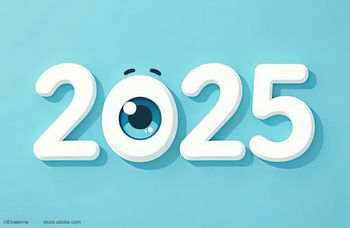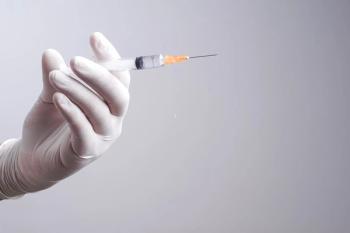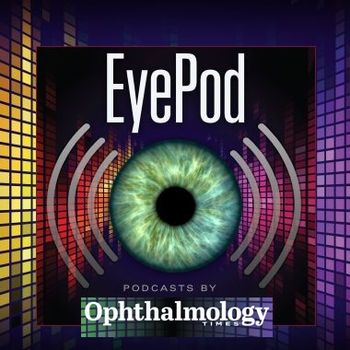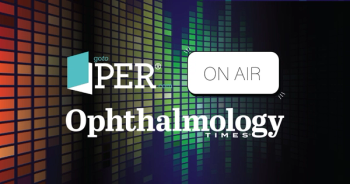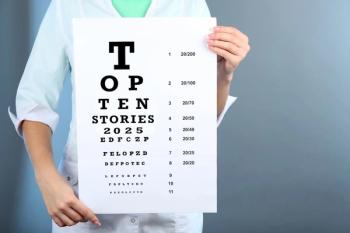
- Ophthalmology Times: July/August 2025
- Volume 50
- Issue 4
Under-eye filler: Cannula vs needle in tear trough treatment
Key Takeaways
- Tear trough filler, using HA, offers a nonsurgical option for under-eye rejuvenation, requiring precise anatomical knowledge and conservative techniques to minimize complications.
- Patient assessment is crucial, considering factors like fat loss, skin thinning, and bone resorption, to tailor treatment plans effectively.
Understand the anatomical risks, technique-specific benefits, and patient selection criteria
Tear trough filler remains a topic of debate among some surgeons due to concerns about complications such as edema, malar mound accentuation, and vascular compromise. Nonetheless, this treatment has continuously proven to be an effective tool for nonsurgical correction when performed with anatomical precision and judicious technique.
For the right patient, under-eye dermal hyaluronic acid (HA) filler injection offers a reversible, outpatient option that avoids the downtime and cost of a blepharoplasty or fat grafting. When executed with anatomical finesse and conservative dosing, under-eye filler offers a powerful, nonsurgical option for aesthetic restoration, as it is able to deliver natural, harmonious results with minimal downtime.
Under-eye, or tear trough, filler involves strategically using HA-based dermal fillers to treat volume deficiency, shadowing, and contour irregularities in the infraorbital region. This area includes intricate anatomical components such as the palpebral and orbital portions of the orbicularis oculi muscle, the postseptal and malar fat pads, and the orbital septum, each playing a significant role in both functional integrity and aesthetic presentation. The presence of vital neurovascular structures, such as the infraorbital foramen and its emerging infraorbital nerve, infraorbital artery, and infraorbital vein, requires the provider to have meticulous anatomical knowledge during aesthetic intervention to avoid serious adverse events.
Anatomical considerations and patient assessment
The complex anatomy of the under-eye makes the area difficult to treat, requiring a thorough understanding of the distinct landmarks and the changes that occur with aging to properly assess a patient. The tear trough deformity can become visible due to the loss of subcutaneous fat, thinning of the skin that sits above the orbital rim, descent of the cheek, and/or resorption of the bone.1
Aside from the hollowing of the tear trough region, a prominent pretarsal orbicularis roll—which becomes more prominent when the orbicularis contracts—can contribute to the aged appearance of the tear trough.1 Attenuation of the zygomatic cutaneous and orbitomalar retaining ligaments,2 orbital fat prolapse, fluid bags, and malar mounds (festoons) are also seen with aging in the under-eye region. These internal changes can also be accompanied by superficial skin changes such as periorbital hyperpigmentation, which is distinct from the shadowing caused by tear trough hollows. This color change can be due to dermal melanocytosis,3 superficial location of vasculature (with thin skin),3 or the Tyndall effect, which causes a blue discoloration due to superficially placed filler.4 To properly treat a patient’s tear trough, a provider must be able to accurately assess and distinguish between these various anatomical contributors to under-eye aging when giving an exam.
First, allow the patient to reveal their primary concern and identify it in the mirror. Then examine the patient in both dynamic and static states with good lighting, ensuring that quality photographs (camera and 3D imaging software) are taken for the patient’s records. Palpate the area to thoroughly assess the position, volume, and texture of fat, bone, muscle, and skin. A skin pinch test may be performed if the patient was previously injected to identify the old filler’s location, volume, and texture. Using the physical examination and the volumetric analysis feature of the 3D imaging software, identify the concern and classify the severity. From there, create a treatment plan accordingly.
Treatment options and injection technique
Treatment of the under-eye is not a one-size-fits-all approach. When treating a mild to moderate tear trough hollow, an HA filler with a low G-prime value may be injected periosteally beneath the orbicularis oculi. It is advisable to moderately undercorrect the under-eye during a session, allowing the filler to expand before considering further injection. This conservative approach minimizes the risk of overfilling and edema and promotes natural rejuvenation of the region.
With my cannula injection technique, I begin by injecting 0.2 to 0.5 mL of 1% lidocaine hydrochloride using a 25-gauge needle (5/8 in) approximately 1.5 cm below the orbital rim, followed by insertion of a 27-gauge cannula (1.5 in). The cannula is angled diagonally toward the medial canthus at the periosteal level along the orbital rim, below the muscle, and under the defect, and the product is deposited with retrograde linear threading. Typically, I do not exceed a 0.5-mL injection of filler for 1 side during 1 session, as overtreating can lead to exacerbated puffiness, migration, a doughy appearance, and the Tyndall effect.5
Some patients may not be ideal candidates for injection with a cannula and may benefit from injection with a needle, especially when precise placement and fine control are needed. For example, patients with significant infraorbital fat protrusion (and who are not considering blepharoplasty) may benefit from the precise placement of filler to improve the deep nasojugal or palpebromalar grooves. In these cases, I may choose a microdroplet injection technique, which includes using a 31-gauge, 0.5-mL, 6-mm insulin syringe and depositing small (0.5 mL) boluses of HA filler at the periosteal level with a serial puncture technique. The patient’s anatomy should guide an injector’s choice between a needle and cannula, but it should also account for patient safety, anticipated recovery time, and the relative risk of adverse events.
It is equally important to recognize patients who are not suited for under-eye filler. Because of the hydrophilic nature of HA fillers, individuals with significant malar edema, festoons, or fluid retention conditions may experience worsened puffiness following HA filler, as the filler can draw more fluid into the area. I typically avoid injecting HA in these patients, as well as those with significant fat pad herniation and excess skin laxity. In these cases, I may suggest alternative treatments, including surgery, nanofat grafting, autologous platelet-rich plasma (PRP) injection, and/or radiofrequency (RF) skin tightening. Nanofat, PRP, and RF are biostimulatory treatments that offer natural, long-term results and can be done individually or combined for synergistic enhancement of skin quality, collagen production, and overall periorbital rejuvenation.
Safety concerns and risk of adverse events
Although a needle may allow for more precise deposition of filler, there is a higher chance of bruising and vascular occlusion (VO) with a needle vs a cannula.6,7 The infraorbital artery lies 13 mm posterior to the inferior orbital rim, and its proximity to the injection plane increases the risk of intravascular injection.8 A blunt-tipped cannula is less likely to penetrate a vessel, reducing the likelihood of VO.
Although these severe vascular risks highlight the need for proper technique and anatomical knowledge, it is also important to consider the more frequent but less serious transient adverse effects that patients may experience during recovery, such as edema and bruising. Based on preliminary data from my practice, the frequency of postprocedural bruising and bumps was higher when the patient was injected with a needle. However, with a cannula, patients reported experiencing more transient asymmetry and swelling related to soft tissue trauma that occurs while pushing the cannula through tissue planes. By understanding the distinct risk profiles of both needles and cannulas, providers can better tailor their approach to provide the best possible safety outcomes, efficacy, and patient satisfaction.
Conclusion
When performed with skillful precision, conservative technique, and careful planning, under-eye filler is a powerful tool for nonsurgical periorbital rejuvenation. Despite its complexity and the legitimate concerns about complications, HA filler remains an effective and elegant intervention for addressing tear trough hollows in appropriately selected patients. Its reversibility, minimal downtime, and ability to produce immediate yet natural results make it a valuable treatment option in the hands of a skilled injector. Ultimately, delivering optimal aesthetic outcomes without compromising the patient’s safety requires not only experience and expertise but also a willingness to continually learn and refine one’s approach in response to evolving evidence and aesthetic demands.
Kay Durairaj, MD, FACS
Durairaj is in private practice in Pasadena, California, and is vice chair of the Department of ENT/Head and Neck Surgery at Huntington Hospital. She specializes in nonsurgical rhinoplasty, collagen biostimulators, facial contouring, and advanced longevity therapies.
Julie Anush Kazaryan, BS
Kazaryan earned her bachelor’s degree in physiological sciences from the University of California, Los Angeles. She has an interest in regenerative medicine and longevity science and has worked closely with Durairaj on innovative, evidence-based approaches in integrative aesthetic medicine.
References
Naik MN. Hills and valleys: understanding the under-eye. J Cutan Aesthet Surg. 2016;9(2):61-64. doi:10.4103/0974-2077.184048
Swift A, Liew S, Weinkle S, Garcia JK, Silberberg MB. The facial aging process from the “inside out.” Aesthet Surg J. 2021;41(10):1107-1119. doi:10.1093/asj/sjaa339
Sarkar R, Ranjan R, Garg S, Garg VK, Sonthalia S, Bansal S. Periorbital hyperpigmentation: a comprehensive review. J Clin Aesthet Dermatol. 2016;9(1):49-55.
Zein M, Tie-Shue R, Pirakitikulr N, Lee WW. Complications after cosmetic periocular filler: prevention and management. Plast Aesthet Res. 2020;7:44. doi:10.20517/2347-9264.2020.133
Hong GW, Hu H, Chang K, et al. Review of the adverse effects associated with dermal filler treatments: part I nodules, granuloma, and migration. Diagnostics (Basel). 2024;14(15):1640. doi:10.3390/diagnostics14151640
Spada J, Ravera K, Schneider C. Needle versus cannula to treat tear trough: a prospective study comparing both methods. Plast Reconstr Surg Glob Open. 2023;11(11):e5327. doi:10.1097/GOX.0000000000005327
Alam M, Kakar R, Dover JS, et al. Rates of vascular occlusion associated with using needles vs cannulas for filler injection. JAMA Dermatol. 2021;157(2):174-180. doi:10.1001/jamadermatol.2020.5102
Tong JY, Sung J, Chan W, Psaltis AJ, Selva D. Anatomy of the infraorbital artery and its orbital branch. Eye (Lond). 2025;39(7):1380-1383. doi:10.1038/s41433-025-03671-y
Articles in this issue
4 months ago
The future of imaging is out of this worldNewsletter
Don’t miss out—get Ophthalmology Times updates on the latest clinical advancements and expert interviews, straight to your inbox.


